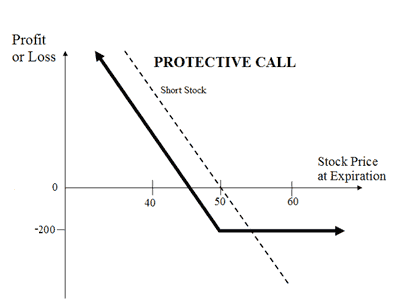 Zerodha (Trading Account)
Zerodha (Trading Account)
FREE Equity Delivery and MF
Flat ₹20/trade Intra-day/F&O
 Zerodha (Trading Account)
Zerodha (Trading Account)
FREE Equity Delivery and MF
Flat ₹20/trade Intra-day/F&O

|
|
Compare Short Put and Protective Call (Synthetic Long Put) options trading strategies. Find similarities and differences between Short Put and Protective Call (Synthetic Long Put) strategies. Find the best options trading strategy for your trading needs.
| Short Put | Protective Call (Synthetic Long Put) | |
|---|---|---|
 |
 |
|
| About Strategy | A short put is another Bullish trading strategy wherein your view is that the price of an underlying will not move below a certain level. The strategy involves entering into a single position of selling a Put Option. It has low profit potential and is exposed to unlimited risk. A short put strategy involves selling a Put Option only. For example if you see that the shares of a Company A will not move below Rs 1000 then you sell the Put Option of that stock at Rs 1000 and receive the premium amount. The premium received will be the maximum profit you can earn from this trade. However, if the price of the underlying moves below 1000 then you will incur unlimited losses. | The Protective Call strategy is a hedging strategy. In this strategy, a trader shorts position in the underlying asset (sell shares or sell futures) and buys an ATM Call Option to cover against the rise in the price of the underlying. This strategy is opposite of the Synthetic Call strategy. It is used when the trader is bearish on the underlying asset and would like to protect 'rise in the price' of the underlying asset. The risk is limited in the strategy while the rewards are unlimited. How to use a Protective Call trading strategy? The usual Protective Call Strategy looks like as below for State Bank of India (SBI) Shares which are currently traded at Rs 275 (SBI Spot Price): Protective Call Orders - SBI Stock Orde... Read More |
| Market View | Bullish | Bearish |
| Strategy Level | Beginners | Beginners |
| Options Type | Put | Call + Underlying |
| Number of Positions | 1 | 2 |
| Risk Profile | Unlimited | Limited |
| Reward Profile | Limited | Unlimited |
| Breakeven Point | Strike Price - Premium | Underlying Price - Call Premium |
| Short Put | Protective Call (Synthetic Long Put) | |
|---|---|---|
| When to use? | Short Put works well when you're Bullish that the price of the underlying will not fall beyond a certain level. |
The Protective Call option strategy is used when you are bearish in market view and want to short shares to benefit from it. The strategy minimizes your risk in the event of prime movements going against your expectations. |
| Market View | Bullish When you are expecting the price or volatility of the underlying to increase marginally. |
Bearish When you are bearish on the underlying but want to protect the upside. |
| Action |
A short put strategy involves selling a Put Option only. So if you see that the shares of a Company A will not move below a 1000 then you sell the Put Option of that stock at 1000 and receive the premium amount. The premium received will be the maximum profit you can earn from this deal. However, if the price of the underlying moves below 1000 than you will incur losses. |
|
| Breakeven Point | Strike Price - Premium |
Underlying Price - Call Premium When the price of the underlying is equal to the total of the sale price of the underlying and premium paid. |
| Short Put | Protective Call (Synthetic Long Put) | |
|---|---|---|
| Risks | Unlimited There is no limit to losses incurred in the trade. The risk is when the price of the underlying falls, and the Put is exercised. You are then obliged to buy the underlying at the strike price. |
Limited The maximum loss is limited to the premium paid for buying the Call option. It occurs when the price of the underlying is less than the strike price of Call Option. Maximum Loss = Call Strike Price - Sale Price of Underlying + Premium Paid |
| Rewards | Limited The profit is limited to premium received in your account when you sell the Put Option. |
Unlimited The maximum profit is unlimited in this strategy. The profit is dependent on the sale price of the underlying. Profit = Sale Price of Underlying - Price of Underlying - Premium Paid |
| Maximum Profit Scenario | Underlying doesn't go down and options remain exercised. |
Underlying goes down and Option not exercised |
| Maximum Loss Scenario | Underlying goes down and options remain exercised. |
Underlying goes down and Option exercised |
| Short Put | Protective Call (Synthetic Long Put) | |
|---|---|---|
| Advantages | It allows you benefit from time decay. And earn income in a rising or range bound market scenario. |
Minimizes the risk when entering into a short position while keeping the profit potential limited. |
| Disadvantage | It is a high risk strategy and may cause huge losses if the price of the underlying falls steeply. |
Premium paid for Call Option may eat into your profits. |
| Simillar Strategies | Bull Put Spread, Covered Call, Short Straddle |
Long Put |

Add a public comment...

FREE Intraday Trading (Eq, F&O)
Flat ₹20 Per Trade in F&O
|
|